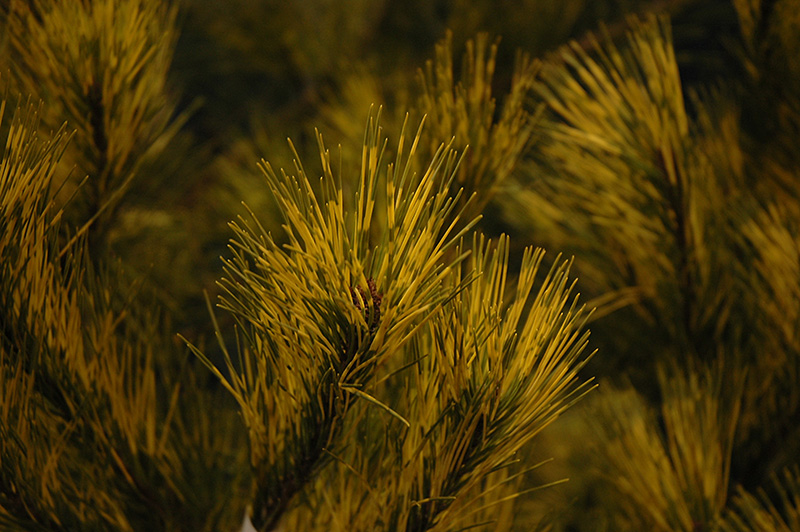Burke Red Variegated Japanese Red Pine
Pinus densiflora 'Burke Red Variegated'
Height: 20 feet
Spread: 15 feet
Sunlight:
![]()
Hardiness Zone: 4b
Description:
This is a fast growing, showily variegated pine that is a standout on the landscape, widely used because its bright color provides excellent contrast, and it makes a great focal point
Ornamental Features
Burke Red Variegated Japanese Red Pine is primarily valued in the landscape for its distinctively pyramidal habit of growth. It has attractive forest green foliage with yellow stripes. The needles are highly ornamental and turn chartreuse in the fall, which persists throughout the winter.
Landscape Attributes
Burke Red Variegated Japanese Red Pine is a multi-stemmed evergreen tree with a distinctive and refined pyramidal form. Its average texture blends into the landscape, but can be balanced by one or two finer or coarser trees or shrubs for an effective composition.
This is a relatively low maintenance tree. When pruning is necessary, it is recommended to only trim back the new growth of the current season, other than to remove any dieback. It has no significant negative characteristics.
Burke Red Variegated Japanese Red Pine is recommended for the following landscape applications;
- Accent
- Hedges/Screening
- General Garden Use
Planting & Growing
Burke Red Variegated Japanese Red Pine will grow to be about 20 feet tall at maturity, with a spread of 15 feet. It has a low canopy, and is suitable for planting under power lines. It grows at a slow rate, and under ideal conditions can be expected to live to a ripe old age of 120 years or more; think of this as a heritage tree for future generations!
This tree should only be grown in full sunlight. It prefers dry to average moisture levels with very well-drained soil, and will often die in standing water. It is not particular as to soil type, but has a definite preference for acidic soils. It is highly tolerant of urban pollution and will even thrive in inner city environments. This is a selected variety of a species not originally from North America.



